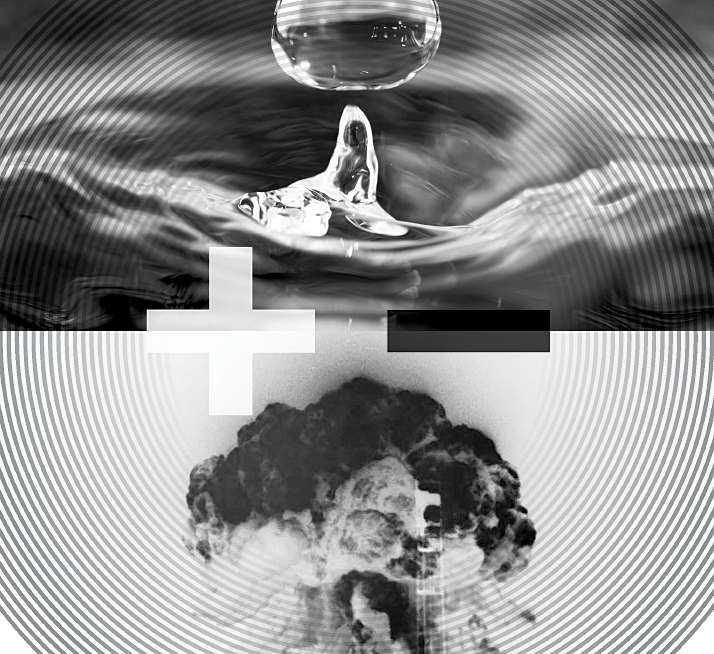
Paul Haddad is Distinguished Professor of Chemistry at the University of Tasmania, and from 2001-2013 was the Foundation Director of the Australian Centre for Research on Separation Science (ACROSS - Cutting ACROSS Separation Science). He has worked in IC for more than 30 years, with a special emphasis on the development of algorithms for computer-assisted prediction of retention times in IC.

Markus Läubli is Manager, Marketing Support IC at Metrohm’s Competence Center IC, supporting IC sales and applications worldwide. He started on IC development for Metrohm almost 30 years ago after his thesis at Eidgenössische Technische Hochschule (ETH) in Zurich.

Joachim Weiss is Technical Director of the Chromatography and Mass Spectrometry Division (CMD) of Thermo Fisher Scientific, where he is responsible for global sales support of the former Dionex liquid chromatography and sample preparation products.

PH: I will mention four groups (excluding my own group!):
First, IC research and development staff at Dionex (now Thermo Fisher Scientific), particularly Chris Pohl and Nebojsa Avdalovic. Over a period of almost 40 years, these staff have maintained a position at the absolute forefront of research and developments in IC, leading to numerous high-level innovations that collectively have maintained Dionex as the unquestioned leader in IC.
Second, the late James S. Fritz from Iowa State University, who made profound contributions to the non-suppressed form of IC, commercialized by Waters, Metrohm and others.
Third, Sandy Dasgupta from Texas Tech University and then University of Texas at Arlington, who has been responsible for a long list of highly innovative and highly original developments in suppressed IC.
Finally, Charles Lucy of the University of Alberta, Canada, who has been responsible for many insightful fundamental studies in IC.

ML: Besides the two main manufacturers of IC instrumentation, a few academic groups are working on further development in IC. Just to name the bright stars: Paul Haddad, Sandy Dasgupta, and Hamish Small.
Though it’s true that Metrohm did not invent IC, I feel we brought it to a higher level. We made it the robust, versatile method that it is today, for routine as well as research applications. An important part of our contribution to IC has been in terms of user friendliness; take, for example, state-of-the-art Metrohm Inline Sample Preparation (MISP). Our focus on system quality started a competition from which everybody – manufacturer and user alike – has benefited and will continue to benefit.

JW: Actually, the list is long – I probably can’t be definitive, but I can cover many of the bases… The heart of any ion chromatographic system is still the separator column. It is relatively unique for ion chromatography that the fundamentals in modern, pellicular ion-exchange stationary phase design were developed in industry by Hamish Small and colleagues at Dow Chemical in the US. Based on the groundbreaking work of Small’s group, Christopher Pohl and his entire research team at Dionex Corporation (now part of Thermo Fisher Scientific) are definitely the most significant contributors to IC stationary phase design up to the present day.
Other important contributions in the field of IC stationary phase design were made by Charles Lucy (as noted by Paul) who especially focuses on separator columns for Fast IC, Brett Paull and Emily Hilder (University of Tasmania, Hobart, Australia) as well as Kelly Flook (Dionex Corporation) in the field of ion-exchange monoliths, and lately also by Andreas Seubert (University of Marburg, Germany), to name just a few.
The most remarkable contributions in the field of IC detection were made by Dennis Johnson (Iowa State University, Ames, USA) who developed the concept of pulsed amperometric detection, which today is one of the most common detection techniques for carbohydrates and related components. William LaCourse (University of Maryland, Baltimore, USA), a former student of Johnson, further developed this technique by introducing the concept of multicyclic waveforms for the detection of amino acids, amines, and divalent sulfur compounds. The recently introduced concept of charge detection in IC is based on the groundbreaking work of Purnendu (Sandy) Dasgupta (University of Texas, Arlington, USA).
General contributions in ion chromatography developments, such as the concept of Reagent-Free IC (RFIC), were made by Yan Liu and colleagues (Dionex Corporation), while Kannan Srinavasan’s group (also Dionex Corporation) are very well known for their contributions in the development of electrolytic devices such as suppressors and continuously regenerated trap columns.
Last but certainly not least, Paul Haddad’s group (also University of Tasmania, Hobart, Australia) have to be named for a huge number of contributions in the field of applied ion chromatography. Together with Peter Jackson, he also published an important textbook on ion chromatography.

PH: Not an easy question for me to answer – you should ask those involved! However, one thing in common is that all groups have worked collaboratively with others (in fact, with each other). In the case of Dionex/Thermo Fisher they have collaborated actively with academics (especially the academics on my list), whilst in turn the academics on my list have all collaborated with industry (mostly with Dionex). IC researchers are therefore all strongly interconnected and there is a strong sense of working together. You could almost say that IC researchers around the world form a single, large family exhibiting a high degree of cooperation rather than competition.

JW: I can’t speak to the success of individual groups – certainly good collaboration is key as Paul notes. But I would like to say that the overall success of ion chromatography in ion analysis can only be understood by comparing it with traditional wet chemistry used before the introduction of IC. In contrast to atomic absorption spectroscopy (AAS), photometry, titration, and ion selective electrodes, IC offers simultaneous determination of many ionic sample components, even when concentration differences between sample components are very disparate.
The second reason for success of IC in comparison with wet chemistry is speed. Today, complete anion or cation profiles are achieved in significantly less than ten minutes. Determination of ions down to sub-µg/L levels utilizing large-volume injections indicate the enormous sensitivity that IC provides nowadays. Determinations down to single-digit ng/L levels after pre-concentrations became routine in the semiconductor and nuclear power industries. However, the only limiting factor is ubiquitous ions, such as chloride or sodium. The large variety of universal purpose and application-specific stationary phases as well as specific detection systems, such as suppressed conductivity, amperometry, charge, UV/Vis, and hyphenated techniques (IC-ICP, IC-MS), account for the enormous selectivity that IC provides. Thus IC succeeded initially, because it provided a powerful solution to an unanswered question, especially in the field of anion analysis.

ML: The “secret of success in IC” for us should be defined much less in academic terms but rather in the practical dimensions of ion chromatography. “What can I do with it and will it work for me?” – these are the questions that customers are asking and, as a solutions provider, the ones that we are addressing. Instrument design, ease-of-use, and relentless application work for and with users are the factors that make or break success in IC. “Success in IC” in that sense has come over time. IC as a technology has been ‘democratized’; today, it is a robust, highly sensitive, and affordable mainstream analytical technique that may be used by anyone. Smart engineering has brought the running costs of ion chromatography down, especially when compared to competing high-end spectroscopic techniques.

JW: Upon introduction, ion chromatography was characterized by stationary phases of relatively low chromatographic efficiency due to the large particle sizes. Although the seven so-called standard anions were resolved to baseline, resolution was limited, and analysis times were around 30 minutes. Despite injecting large sample volumes of approximately 100 µL, lower detection limits than 100 µg/L were not possible by direct injection. Mono- and di-valent inorganic cations could not be analyzed simultaneously. Gradient elution techniques in combination with conductivity detection in both anion and cation exchange chromatography were unknown due to the lack of high-capacity suppression devices, and detection systems were limited to conductivity, DC amperometry, and UV/Vis detections.
The introduction of the concept of electrolytic eluent generation revolutionized IC not only in terms of ease-of-use, but allowed the application of gradient elution based on hydroxide or methanesulfonic acid eluents for anion or cation exchange chromatography, respectively. Modern stationary phases are based on much lower particle sizes, resulting in higher chromatographic efficiency and thus, in higher resolution and much higher sensitivity. The downside of using smaller particle size columns is the significantly higher backpressure. However, modern IC instruments are capable of tolerating up to 5000 psi (34.5 MPa) back pressure due to PEEK-based fluidics. Also, the range of specific and non-specific detection systems is much wider today. The higher degree of automation in combination with dual instrument configurations and software solutions provides a great deal of flexibility.

ML: Most importantly, ion chromatography has become more straightforward. Not only has the range of instruments from basic instrumentation up to sophisticated high-end systems grown, but also a lot of developments in automated sample handling and new features in the ease of use have arrived. Ion chromatography has moved from a sophisticated technique that required a lot of special skills to a straightforward routine method.

PH: IC has been around for almost 40 years and is now a very mature analytical technique. Changes have been profound and are too numerous to mention. These changes fall over the whole spectrum – stationary phases, instrumentation and hardware, suppressors, miniaturization, developments in theory, and so on.

PH: (i) The detailed understanding of IC theory and retention mechanisms made it possible to predict retention times under varying eluent conditions, and thereby optimize separations and extract the best possible performance from IC systems.
(ii) Exquisite understanding of the factors that influence separation selectivity in IC led to the design and synthesis of stationary phases of diverse and predictable selectivity, capable of separating highly complex mixtures.
(iii) Major developments in hardware, in particular electrolytic suppressors and electrolytic eluent generators, enabled IC to be performed with only water as eluent. IC must be the only chromatographic technique in existence in which the eluent and the final column effluent consist only of water. These features must certainly qualify IC as the “greenest” analytical chemistry technique in existence today.

ML: In contrast to HPLC, IC was not initially feasible with direct (conductivity) detection mode because of the high background conductivity of the eluents. Only the development of a post-column reaction – the so-called chemical suppression – made IC possible. The next important step was the development of high-performance conductivity detectors with highly shielded and thermostatted detector blocks. They opened IC to direct and suppressed conductivity detection, thus widening the application range from strong and medium strong acid anions to the full range of anions. For cation determination, columns that separated alkali and alkaline earth metal cations ushered in a new era. All the more because ammonium and amines – not detectable by AAS and ICP – could then be easily separated and determined.
A stronger focus has been placed on further detection modes such as UV/VIS, amperometry and the hyphenation with MS and ICP-MS.
With the introduction of inline dialysis, the era of automated inline sample preparation – that is to say, automatic sample preparation before injection – began. Techniques such as inline ultrafiltration, inline dilution, inline matrix elimination followed. Using intelligent software, logical decisions have become feasible, which allows us to check whether a result is within the calibration range. If not, the sample will be automatically rediluted with an appropriate dilution factor – all without user intervention.

JW: One of the first major milestones in the development of IC was the introduction of membrane-based suppressor devices in the mid-1980s. Membrane-based suppressor devices are continuously operated and have a much higher suppression capacity allowing for the use of high-capacity ion exchangers, which are important for analyzing closely eluting ions of disparate concentration levels. Around the same time frame, pulsed amperometry was introduced as a new detection method for sensitive detection of carbohydrates and related compounds. The concept of RFIC mentioned above is another important milestone introduced at the end of the 1990s. Until then, eluents and regenerants had to be prepared manually – a source of labor and uncertainty. RFIC involves the generation, purification, and suppression (for conductivity and charge detection as well as for hyphenation with MS) of eluents by means of electrolysis. Thus, high-purity, contaminant-free eluents are generated in situ with an electrical control of eluent concentration, which is a prerequisite for gradient elution techniques.
One of the most recent milestones in the development of IC was miniaturization down to the capillary level, which enables IC users to operate their systems 24 hours a day over the entire year without processing large amounts of liquids. Capillary IC saves the time for system equilibration and re-calibration, and offers a 100-times higher mass sensitivity. It is predominantly used in routine analysis, where chromatographic conditions are not changed over a long period of times.
The introduction of charge detection two years ago is a milestone in detection development as it provides larger response factors and an almost linear calibration for weakly dissociated ions that exhibit smaller response factors and a non-linear calibration behavior in suppressed conductivity detection. The introduction of high-pressure IC three years ago provides an instrument platform for high-throughput or high-resolution separations in IC utilizing 4 µm ion exchangers.

PH: (i) Miniaturization and field portability. (ii) Higher efficiency particulate stationary phases, especially using successful principles demonstrated by UPLC, such as sub-2 µm particles and core-shell particles. (iii) Increased peak capacity columns. (iv) Extremely rapid (sub-minute) separations.

ML: ‘Ease of use’ on instrumentation and software is still a large field for development, by which I mean that instruments and software need to check system suitability during routine runs. The user requires information about any change in performance immediately and before obtaining wrong results. On the other hand, we are looking forward to tracking any new developments in research and development.
I would also like to say that quality is not only how instruments are built and software is designed. Quality means ongoing work and a dialogue between manufacturer/supplier and user. Development of new and alternative phases for IC columns is still a challenge. Faster separations, a broader range of selectivity, and higher stability are still required.

JW: One of the biggest challenges in ion chromatography is separation of ions at very disparate concentration ratios; for example, saline samples in environmental (seawater), in petrochemical samples (formation water), and in industrial samples (brines), which can only partly be achieved by one-dimensional chromatography using selective stationary phases in combination with specific detection methods. The situation is even worse in the analysis of ionic contaminants in ultrapure chemicals that are used in the semiconductor industry. In the latter case, two-dimensional separations (2D-IC) and heart cutting techniques (IC×IC) are required, which are currently being developed. A lot of emphasis is also directed toward the integration of sample preparation processes into the total analytical solution in the form of in-line sample preparation techniques

PH: I believe that the areas I mentioned are receiving some attention, but the level of this attention and the intensity of focus will be market-driven.

JW: Absolutely! Instrument manufacturers in cooperation with the respective industries have a high degree of interest to tackle these problems. While industry needs a solution for these problems, instrument manufacturers would like to expand the market for IC with analytical solutions. On the other hand, research groups like Peter Schoenmakers’ (University of Amsterdam) are currently looking very intensively into two- and multi-dimensional separations to increase peak capacities in the minimum amount of time.

ML: Ion chromatography will be applied to a broader range of applications, both in the lab and in process analysis. The analyst’s dream should come true: place the sample on the autosampler, press the start button – and get the result. Sample handling will be much more automated with respect to sample preparation but also with respect to quality assurance. The software will focus more on plausibility and quality checks of results. Moreover, multiparameter analysis, the combined ion analysis, such as IC and titration (TitrIC), and IC and voltammetry (VoltIC) will become more important and will include more parameters.

PH: As mentioned above, IC has been available commercially for almost 40 years and is therefore a very mature technique. IC has defied the odds by evolving continuously into new formats and this evolution has maintained the vigor and freshness of IC as an analytical technique. One might expect the rate of developments of IC to moderate, but I suspect that this will not occur due primarily to the intensive efforts of Dionex research staff. It is also fair to say that the cohort of dominant IC researchers worldwide consists of researchers nearing the end of their career. A new cohort of active and talented IC researchers will therefore need to emerge to take the mantle from the outgoing researchers.

JW: Ion chromatography is a very well established and well-developed analytical method. Nevertheless, we have still seen some exciting new developments in recent years that are outlined above, such as Capillary IC, charge detection, and high-resolution separations based on smaller particle size columns. I think it’s very difficult for anybody to predict the development of an analytical technique over such a long time of 10-20 years; however, for the near future I see a lot of potential for further development in a much greater degree of automation based on hardware and chromatography software developments as noted by Markus. Separation times will definitely decrease in standard ion analysis and high-resolution separations will become available on a routine base. As mentioned above, turnkey solutions for two-dimensional separations might become available very soon. A big gap could be filled with the discovery of materials that are as chemically stable as PEEK but with a much higher pressure tolerance – that would allow IC to follow more closely the transition from HPLC to UHPLC. Within the foreseeable future, it will be more and more difficult to differentiate between IC and RPLC. With the introduction of mixed-mode stationary phases, for instance, we see the same trend in separation science as in instrument hyphenation – that is to say, the combination of several retention mechanisms will enable us to separate ionic and/or ionizable analytes we presently cannot separate with either one of the retention processes.
I would say that column miniaturization down to microbore (2 mm and 1 mm) or even capillary (0.4 mm) will eventually replace standard bore (4 mm) columns due to the savings in eluent consumption and eluent disposal. This transition would also enable the operation of ion chromatographs over a long period of time. Hyphenation of IC with ICP or MS for element-specific or mass-selective information will definitely help to overcome the once very competitive thinking of scientists by combining the best of both worlds instead of pitting one against the other – it shouldn’t be chromatography versus spectroscopy!
I don’t see any IC technique falling by the wayside any time soon – analytical chemists love to have a huge toolbox to solve analytical problems!

Metrohm AG manufactures precision instruments for chemical analysis in its own facilities in Herisau, Switzerland. Metrohm focuses on ion chromatography, titration and metering (for example, pH and conductivity), as well as voltammetry and spectroscopy. Metrohm sells and supports instrumentation and applications worldwide through exclusive subsidiaries. Headquartered in Waltham, MA, USA, Thermo Fisher Scientific is a manufacturer in the genetic testing and precision laboratory equipment markets. Dionex Corporation – an ion chromatography products specialist – has been part of Thermo Fisher Scientific since May 2011.




